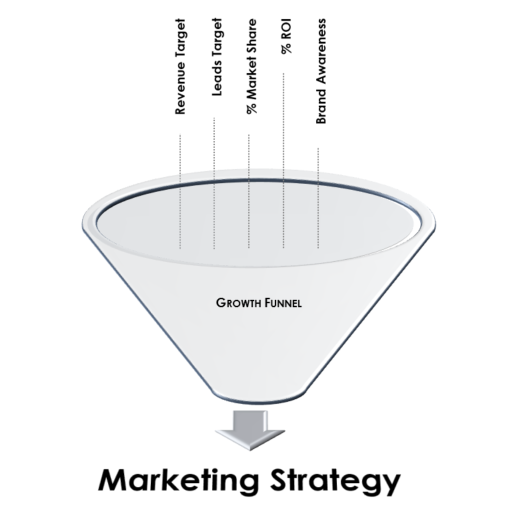For organisations who are agile, focused, and customer centric, an effective marketing strategy looks like a well-developed internal GPS system. Capable of receiving, interpreting and transmitting data quickly, reliably and efficiently, it sets the direction for the delivery of effective marketing plans that are aligned with the company’s high-level business strategies.
What does a winning marketing strategy look like ?
In the midst of a rapidly evolving marketing landscape impacted by new technologies, trends, buyer behaviour and competition, marketing success can no longer be measured on the results of a single campaign but rather on the overall impact that all activities (offline and online) have on the organisation profitability, brand positioning and market success.
Developing measurable marketing goals with tangible outcomes is a critical part of an organisations growth and development process.
Getting on the right path?
While every destination for your marketing and communications goals may have a number of routes available, your most effective marketing pathways are those that are generated from a well-developed strategic direction encapsulating all of your organisations business development and growth targets.

Mapped out through the focal point of your customer cantered lens, marketing strategies make way for clear and concise integrated marketing plans that lead to targeted, customized strategic actions that will help you reach your objectives while saving time, money and valuable resources.
Why integrated marketing works
Integrated Marketing is the unified voice that is transmitted across multiple channels and devices creating the distinct and undistorted sound that amplifies a brand and cuts through the clutter of an overcrowded marketplace.
Integrated Marketing is all about effective storytelling. Taking the same brand story and communicating it in multiple ways to reach and engage with identified target audiences with the right message at the right time.
Integrated Marketing works on the knowledge that as consumers, we are all different, some of us are highly visual and need a great deal of imagery to capture our attention. While others, have the need to get deep into the nitty gritty of facts and figures or pages and pages of text.
While there are no cookie cutter solutions when it comes to developing successful integrated marketing campaigns, there are a number of solid and proven foundations as to how and why this approach is fast becoming the strategy of choice for leading B2B organisations.
Keys to success
#1 – INTEGRATED MARKETING IS CUSTOMER FOCUSED

Let’s face it, we wouldn’t need marketing if we didn’t need a consumer for our products and services. While it would appear that the digital age has completely disrupted the marketing landscape, the one factor that has remained unchanged is the central position held by the consumer.
Customer limitations of a brick and mortar store in a fixed location have well and truly been surpassed with the global explosion of eCommerce. We are now facing an era where online retailing is pulling in big dollars for organisations of every size.
The integrated marketing approach acknowledges that the consumer is still king and still very much on the throne. Armed with the power of digital communication in their hands, marketing has now become a dialogue between the brand and the consumer where the power to build of to destroy can be as simple as a click.
In addition to just understanding the traditional demographics and buyer behaviours, brand marketing now needs to take a more holistic view of the full customer journey, with the understanding that every touch point experience plays a critical role in the overall success of the brands acceptance.
In an interesting article published by Forbes (Top Shopping Trends Of 2018: Retail Experts Share What To Watch For Next Year) it was predicted that: ‘In 2018 retailer will realign their businesses with the needs and desires of customers who are driven, not by a passion to acquire more things but by a deep desire for more experiences. ’Pamela N. Danzier, Contributor.
# 2 – INTEGRATED MARKETING IS DATA DRIVEN
Through the onslaught of available consumer-based data and analytics, there is no longer any excuse for poor judgement and unmeasurable campaign effectiveness. As one of marketing’s most valuable resources, having the right data means having targeted and qualified information in which to create effective, scalable and repetitive processes that lead to the organisations growth goals.
Note however, in this excessively data rich landscape, accessing the data is not enough. Success comes through having the insight and ability to translate the data into effective and actionable tactics that help: implement a more customer centric approach while maximizing marketing efficiencies and ROI (Return on Investment).
# 3 – INTEGRATED MARKETING IS EFFICIENT
An integrated approach opens the door to the development of streamlined processes that are targeted, cost effective and efficient. The strength of a focused and consistent brand message delivered across both traditional and non-traditional marketing channels not only becomes easier to create and implement, it sends out trust worthy, clear and concise brand messages that your audiences can relate to and engage with personally.
If we can learn just one thing from our leading global brand giants it is the power behind the uniformity of message. Top of mind leadership is awarded to brands that are relentless in their pursuit of cohesive brand marketing.
Want to know more about aligning marketing & business goals?
At creative excellence we believe that an integrated marketing approach that is specifically aligned with your organisations/brand business growth goals will be the catalyst that drives your continued success.
If you’d like to discuss this or any other marketing/business development needs that you have then please take this opportunity to contact creative excellence today.
Author’s insights:
As an Integrated Marketing Strategist with over 20 years’ experience, roslyn whately knows what it takes for business to succeed in the face of increasing competitive forces within a rapidly changing media landscape.
